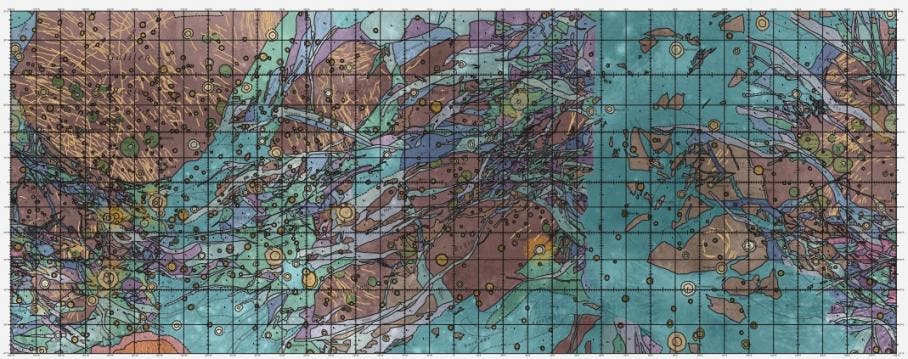Jupiter is named after the Roman king of the gods for good reason. It’s the largest planet in the solar system and has more moons than any other planet. But that’s not all. This mighty gas giant is truly a wonder of the cosmos, boasting numerous fascinating features and unique characteristics. Read on for more facts about one of the most amazing planets in the solar system.
1. Jupiter is the king of planets by mass
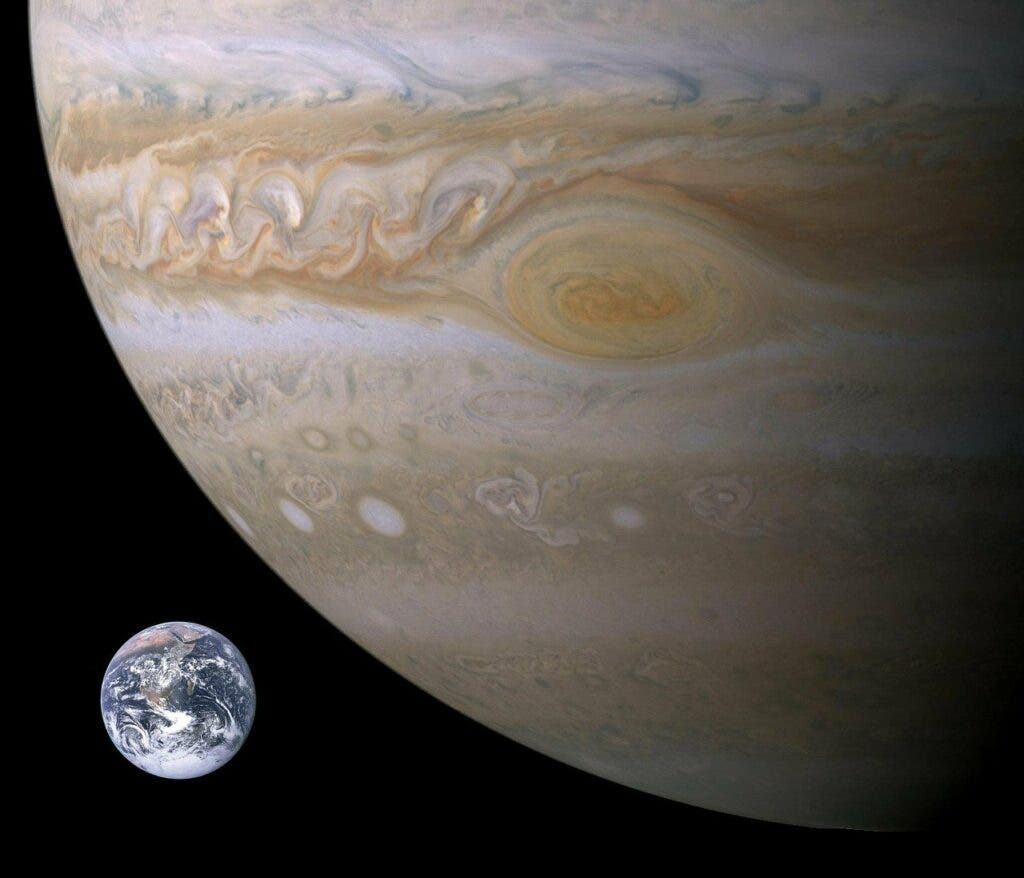
Everyone’s learned at school that Jupiter is the largest planet in the solar system. However, this is a bit of an understatement. Jupiter is by far the most massive cosmic body in the solar system, being 2.5 times more massive than all other planets combined. It is nearly 318 times more massive than Earth and it would take 11 Earths lined up next to each to match Jupiter’s diameter. Its massive size means that it exerts a tremendous gravitational pull, which is why Jupiter is often referred to as a “gas giant”.
2. Its Great Red Spot is actually a planetary-sized storm that has been raging on for centuries
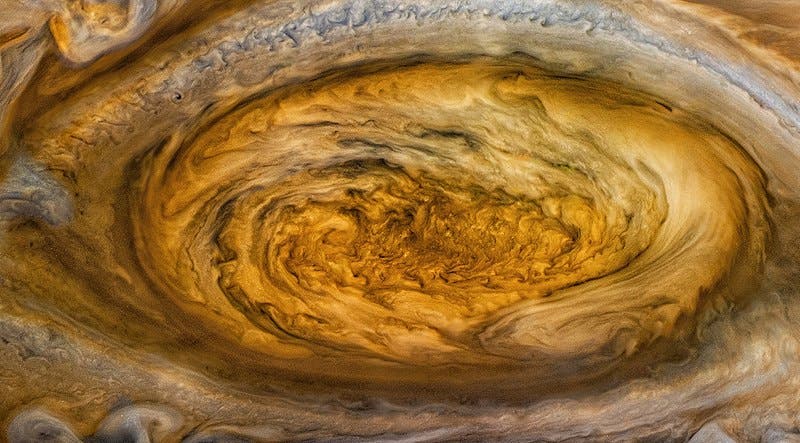
In 1665, famed Italian astronomer Giovanni Cassini observed a huge blemish south of Jupiter’s equator. This ‘Great Red Spot’, as it’s still called today, has been the subject of contention among astronomers for centuries. Some have proposed that the feature, which is large enough to contain 2-3 planets the size of Earth’s diameter, is a huge storm. This is indeed the case, NASA scientists found after the Voyager 1 mission completed a flyby of the planet in 1979.
Scientists confirmed that the Great Red Spot is an extremely persistent anticyclonic storm, fueled by Jupiter’s turbulent and fast-moving atmosphere.
The red spot spins anticlockwise and takes six Earth days to rotate completely. However, it remains a mystery why this stormy region is red. One possible explanation is the presence of red organic compounds.
The Great Red Spot might disappear in the next few centuries, though. During Cassini’s observations, the size of the spot is estimated to have been 40,000 km, whereas today it is about half as large. However, astronomers are fairly confident a new giant red spot will appear somewhere else on Jupiter’s surface, due to the planet’s atmospheric dynamics.
3. The first astronomers to track Jupiter were Babylonians

It’s no secret that the ancient Babylonians were skilled mathematicians. For instance, they understood the Pythagorean theorem nearly 4,000 years ago, or more than a millennium before Pythagoras himself was born.
Their mathematical prowess naturally extended to astronomy, regularly employing arithmetic to catalog the movements of celestial bodies and improve their astronomical predictions.
Mathieu Ossendrijver of Germany’s Humboldt University of Berlin spent no less than 13 years studying 2,400-year-old tablets that contained what he described as a “small bunch of four weird trapezoid computations.” He later found that the trapezoids encoded aspects of Jupiter’s motion, including its appearances on the horizon.
4. Jupiter has the shortest day of all planets, despite its hefty size. A day on Jupiter only lasts 10 Earth-hours.
For all its monstrous size and mass, you’d think Jupiter would be slow to rotate around its axis. However, it’s the fastest spinning planet in the solar system, with a rotational velocity of 45,300 km/h.
As such, a day on Jupiter only lasts 9 hours and 55 minutes. A year, however, is much longer — Jupiter orbits the sun every 11.8 Earth-years.
What’s more, due to this rapid rotation, the planet has an oblate shape with flattened poles and a bulging equator just like Earth. Its powerful rotation is also responsible for the next point on this list.
5. Jupiter has the strongest magnetic field of any planet in the solar system
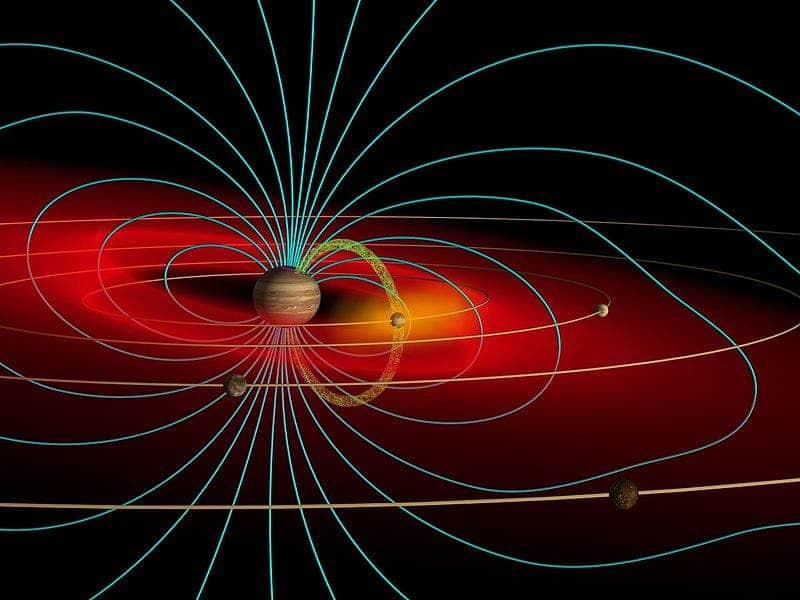
Like Earth, Jupiter’s core is made of active, swirling molten material whose motion generates a magnetic field — and a very powerful one to boot. According to measurements performed by NASA, Jupiter’s magnetic field is at least 14 times stronger than Earth’s, making it the most powerful in the solar system.
6. Jupiter has a thin ring system

This wouldn’t be a list of facts about Jupiter without mentioning its rings. Unlike Saturn’s more iconic rings, Jupiter’s are very faint and made of dust rather than ice.
For centuries, these rings were too faint for astronomers to notice. Imagine everyone’s surprise when NASA’s Voyager 1 spacecraft beamed back images of Jupiter’s rings in 1979. The three-ring system begins some 92,000 kilometers above Jupiter’s cloud tops and stretches out to more than 225,000 km from the planet. They are between 2,000 to 12,500 kilometers thick.
Jupiter has a faint ring system made up of four main components: the halo, main ring, Amalthea gossamer ring, and Thebe gossamer ring.
While Jupiter’s rings are not as prominent as Saturn’s, they are still fascinating objects of study. Scientists are still working to understand the origins and dynamics of these rings, as well as their interactions with the planet’s magnetic field and moons.
7. Jupiter has 92 moons and counting
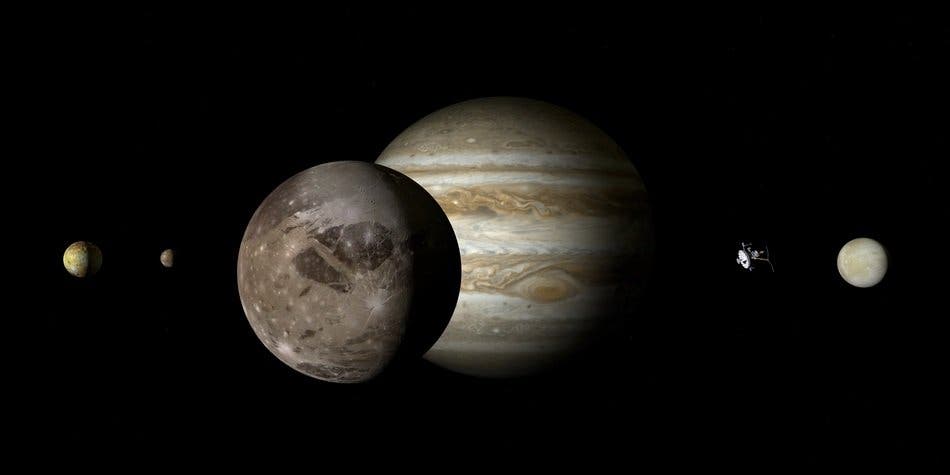
Until recently, Jupiter was widely regarded as the planet of the solar system with the most natural satellites. That’s until 2019, when astronomers affiliated with the Carnegie Institution for Science in Washington DC raised the total number of moons around Saturn to 83, beating Jupiter’s 79.
But then February 2023, astronomers 12 new moons around Jupiter, tipping the scale once more in the gas giant’s favor. So Jupiter has been reinstated as the lunar king of the solar system. However, the tug of war between Jupiter and Saturn for the title is set to continue as astronomers find new moons. By one estimate, there could be as many as 200 moons around Jupiter.
Almost all of Jupiter’s moons are tiny, with a diameter of less than 10 kilometers. This is also one of the reasons why astronomers are constantly finding new moons around both Jupiter and Saturn.
Jupiter has some moons that stand out more. These four major moons are collectively known as Galilean Moons. They are Io, Europa, Ganymede, and Callisto. Ganymede, with a diameter of 5,262 km, is actually the largest moon in the solar system. Io, the closest of the four Galilean moons, is a fascinating world in its own right. It is the most geologically active object in the solar system, with over 400 active volcanoes.
8. And some of these moons may actually be capable of harboring life
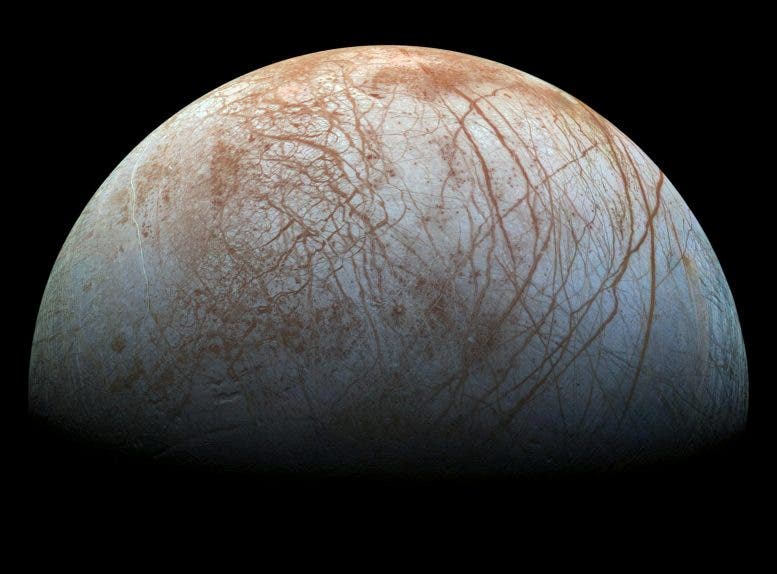
The Voyager and Galileo missions that sent spacecraft to Jupiter and its moons found that Europa, one of the biggest moons in the solar system, has a subsurface liquid ocean covered in thick ice. Now, scientists believe that Europa may actually be capable of harboring life since it meets three essential conditions: biochemically useful molecules, a source of energy, and a liquid solvent (water) in which dissolved substances can chemically react with each other.
But to ultimately find life on Europa, we have to get beneath the ice by one day putting a lander on the surface, preferably carrying a submarine.
9. Jupiter has the brightest auroras in the solar system
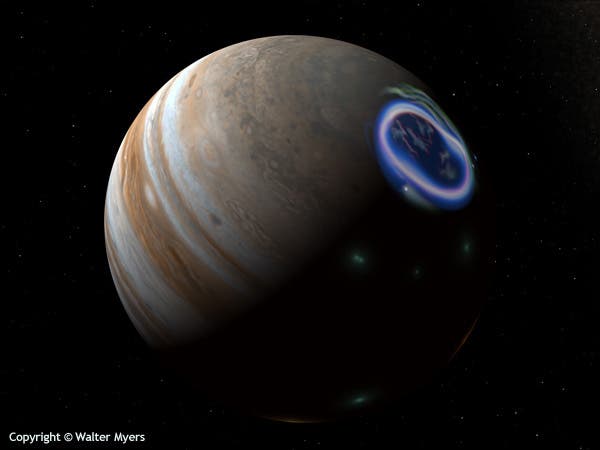
From time to time, people are treated to nature’s dazzling fireworks show; the Aurora borealis, also known as the Northern Lights. This eye candy phenomenon is caused by the collision of energetically charged particles with atoms in the high-altitude atmosphere — and it’s not reserved for Earth. Auroras have also been spotted on Mars, Uranus, and, yes, Jupiter.
Jupiter actually experiences the most intense auroras in the solar system, being hundreds of times brighter than on Earth thanks to its extremely powerful magnetic field. Just like on Earth, auroras on Jupiter are caused by solar storms. However, Jupiter has an additional source for its auroras: charged particles thrown into space by its orbiting moon Io, which is famous for its many large volcanoes.
10. Jupiter is a ‘failed star’
The gas giant is virtually made of 90% hydrogen and 10% helium, that’s mighty close to the sun’s composition. In fact, some consider Jupiter to be a ‘failed star’. Jupiter is already a big boy, but if it were roughly 80 times more massive than it is, it could have collapsed under its own gravity to form a star.
11. Jupiter is the solar system’s asteroid vacuum cleaner
Due to its sheer mass and proximity to the Kuiper belt — a huge region of space beyond Neptune packed with asteroids and dwarf planets — Jupiter attracts a lot of visitors. Astronomers believe Jupiter experiences at least 200 times more meteorite impacts than Earth. So, kudos to Jupiter for clearing the solar system of potentially hazardous asteroids that might have come dangerously close to Earth.
Did we miss something? Share your favorite Jovian factoids in the comment section.
[no_toc]


